Psikyo Shooting Stars Alpha (Nintendo Switch) Review
By Rudy Lavaux  25.01.2020
25.01.2020
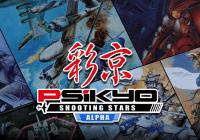
Shoot 'em ups, or Shmups as they are called these days to avoid any confusion with first or third-person shooters, haven't been a dominant genre since the mid '90s. Before the days of Doom or Wolfenstein, however, if anyone wanted some hot video-game shooting action, this was everyone's go-to genre. Big names like Konami and even Capcom were churning out those like hot cakes, but this hasn't been true for quite some time. In the late '90s to early '00s though, a few companies continued to carry the torch in the shadows, like Cave which has evolved the genre into the, still niche, but popular bullet hell sub-genre. Another company, Psikyo, founded by former Video System employees, also developed plenty of shmups for the arcade market in those years, which tended to stick closer to the roots of the genre, as defined by the giants of the '80s. Most of these have since been re-released exclusively on the Switch eShop as stand-alone products. Today, however, those finally get a physical release, in three volumes of which this one is the first. Released in Japan and Southeast-Asian markets as Psikyo Shooting Library Vol. 1, the west finally gets to sample these classics in physical form, as Psikyo Shooting Stars Alpha is finally available.
The biggest attraction of the package is the Strikers 1945 trilogy. These all seem to pay more than a little homage to Capcom's own 194X series, but since the latter could hardly trademark years from the Gregorian calendar, this critic will let Psikyo slide with that one. All three titles, from 1995, 1997 and 1999 respectively, do take on a 194X style at first glance, and vary little between each other. The first two offer six planes to choose from, while the third brings it down to only five, but most of them appear across all three entries, carrying the same specifications. Beyond cosmetic changes, these offer different weapons, screen-clearing bomb types, and move at different speeds, which can make collecting power-ups easier if faster, or dodging bullets easier if a bit more balanced.
All these three function on the same principle. They all contain eight stages each, the first few being shuffled around on each play-through, and each contains a big ship, or ground-crawling machine as a boss. Said boss always breaks down into a smaller form after being destroyed, which starts moving or flying around, being more aggressive than its bigger, slower, first incarnation. At first they appear to be regular machines built by man that would fit in 1945, but quickly they turn into giant, Transformers-like mechs, until, by the end of the game, the player invariably ends up flying into outer space, even to the frigging moon, and taking down alien crustaceans.
The Strikers trilogy functions with a stage-related rank system. The amount of enemy units destroyed on each stage as well as the amount of gold bars/medals collected which were left by ground-type enemies is tallied to hand out point rewards. This is also similar to the 194X series, except here the ranks are only revealed at the end of the play-through. The Strikers series is probably the best example of what Psikyo shooters tend to be like. They typically don't fit in the bullet hell/danmaku genre, because the amount of bullets and the patterns used don't quite rank high enough in terms of complexity and variety. A defining aspect of Psikyo shooters however is bullet speed.
Compared to a bullet hell powerhouse like Cave for example, Psikyo games tend to have bullets travel faster, but in less complex formations, leaving more room to navigate, but less time to react, especially at high difficulties. A definite downside is that bullet patterns are typically not colour coded like they tend to be in Cave titles. Instead, only the size and shape of a bullet gives a hint as to what behaviour or pattern-type it belongs to, which reduces screen readability a bit, making those perhaps a bit less popular with genre fans as a result, but still popular enough, because they are still very capably made. Indeed, those never succumb to the easy pitfall of smaller developers that paint their bullets a colour already used in the background, making for really cheap deaths.
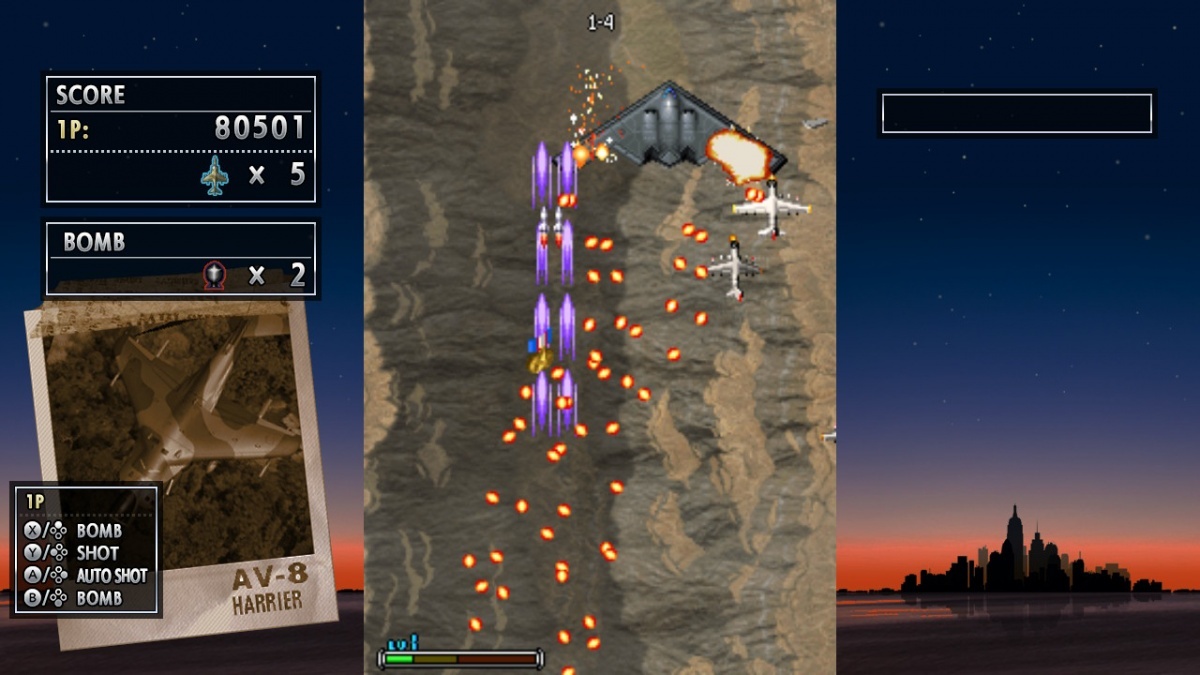
In terms of difficulty, the first is moderately hard, while the second one is the easiest of the three, and the third is really just brutal, even on the easiest difficulty setting. Psikyo games are also rarely pushing the audio or visual envelope, but at least they are all nice looking enough as to not be too bland. The third being the most recent, it is also the one that offers the most complex, and, therefore, most interesting scenes, even if by 1999 2D arcade standards this was the norm, and not the exception.
The fact that these three games are packed together in this first volume is a double edged sword. On one hand, this means that fans who care most of all for those won't have to buy another volume to get the complete set. On the other hand, this also means that three out of six games in the package are very similar to one another, bringing down the overall variety of the package. Some will be happy about it, while others probably won't, and would have preferred things to be mixed up a bit more between each volume of the collection.
Moreover, of the remaining games, Dragon Blaze from 2000 is the one that plays closest to the style of the Strikers 1945 trilogy. The first four stages are also shuffled in a different order on each play-through while the final three always play in the same order. This one has then only seven stages as opposed to eight. Players still collect power ups and bombs, and enemies still drops rewards, in this case coins, which add up to the player's final rank. Bosses still tend to start out big before breaking down into smaller, but more aggressive versions of themselves. This is pretty much where similarities end though. As the name may suggest, Dragon Blaze goes for a radically different theme.
Players control human beings riding dragons. Their ammo can be magic or spears or arrows and the like, combined to the dragon's own fire. The most interesting feature here is that riders can dismount their dragon and fly on their own, while the dragon stays in place and keeps shooting upwards at whatever it is facing. This can and will very likely be likened to Irem's R-Type, except in this Psikyo game, unlike the R-9's force pod, the dragon cannot block enemy fire. It just passes right through instead, though the dragon itself is invulnerable. This really does make scoring and cleaning out a screen of all enemies a lot more rewarding than anything the Strikers 1945 series ever managed.
There is a bit of story to Dragon Blaze, told through very brief dialogue scenes, but this is mostly just an excuse to give context to the action, and nothing is really fleshed out. With only four characters to choose from, variety is a bit slimmer, but each is different enough in terms of firing possibilities and speed to offer a bit of everything to suit everyone's tastes. In terms of difficulty, this one doesn't rank quite as high as Strikers 1945 III but it is hard enough, not so much in sheer amount of bullets (at least not in the early stages), but in the sudden outbursts of big lasers that some of the later bosses like to bring out of nowhere, cheaply surprising newcomers. This one looks about on par, visually, with Strikers 1945 III, which means that scenes are nice-looking enough, but from a pure technical standpoint, those were not so impressive by 2000 standards. Music is also OK, but not quite as memorable as one could hope it would be.
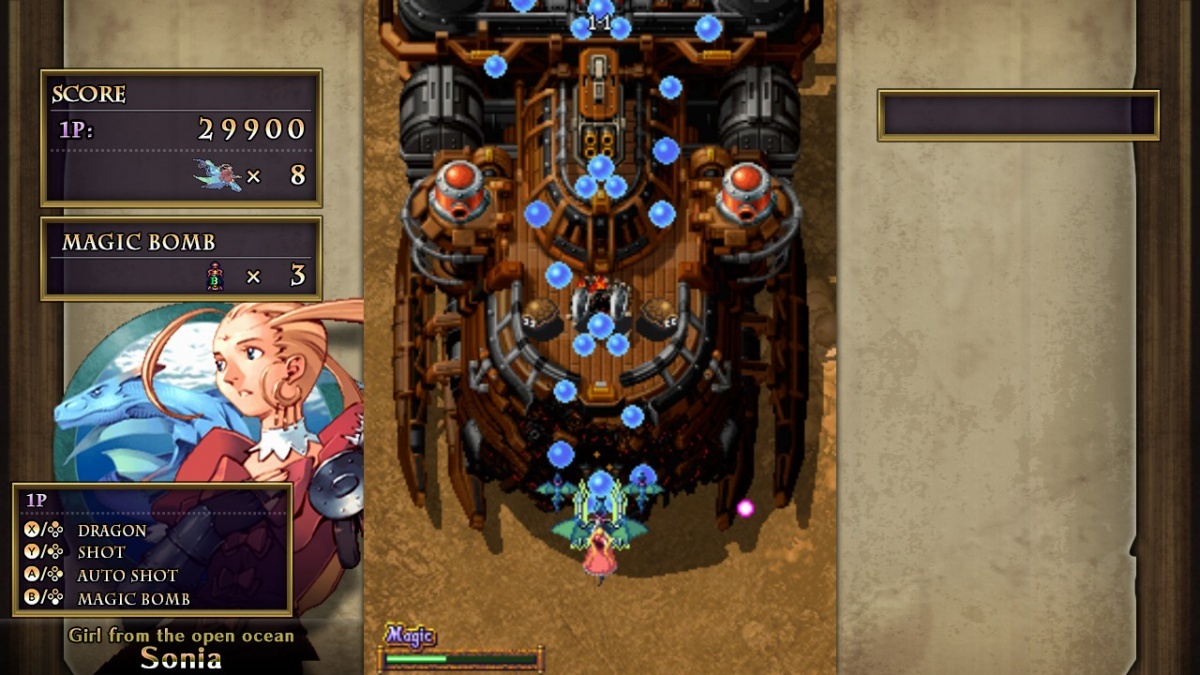
The remaining two games couldn't be more different. Zero Gunner 2 from 2001 ditches 2D entirely, and goes for full polygonal 3D scenes and models. The rendition of this on Switch looks very clean due to rendering resolution being bumped to 720p in handheld mode, and 1080p while docked. Both modes run at a locked 60FPS, which is hardly surprising given the vintage of the original. The higher resolution gives it this clean look that makes the lack of surface details on most elements stand out more perhaps than on an original arcade cabinet, but this will come down to personal preference.
The action itself is noticeably easier to read as a result. though, making this one feel, if anything, easier than originally. It plays very uniquely compared to the others: players take control of a chopper that can only shoot forward, but which can move at different angles all while shooting. This is achieved by holding down the Y button to lock the direction at which the helicopter is shooting, all while still being able to move freely sideways, forwards and backwards with ease to dodge incoming enemy fire. This is a mechanic that, once experienced, is very easy to understand and use, but tough to master completely. It does feel very rewarding though. Furthermore, this one is the only title included to feature actual analogue controls. It feels very pleasant to control, from the subtle shifts in position that this allows, to actually being able to move in more than just eight directions.
Defeated enemies drop power-ups and energy capsules that fly around the screen like in the others, but letting go all buttons attracts them to your flying machine. The energy capsules fill up a meter which when full grants an extra optional shot; typically powerful homing missiles. This one doesn't have a screen clearing bomb of any kind, and it probably doesn't need it either, because the intensity of enemy shots is lower than in the others. However Zero Gunner 2 is the only one included to have environmental obstacles that can block both shots and flying objects, including your machine of choice.
There are only three machines to choose from and, like in other Psikyo instalments, the first few stages are, again, shuffled around, while only the later ones are locked in their place on each replay. While this may sound redundant across all their games, one has to realise that, in the arcades, those wouldn't be set to the easiest difficulty setting and this means that deaths would be frequent. Giving the player the ability to see perhaps new stages they had never yet seen, on each new attempt on a different day, is a real blessing as it rewards perseverance, and helps the initial learning process feel less repetitive as a result. Zero Gunner 2 also has the distinct transforming bosses from other Psikyo shooters.
It is unsurprisingly the most technically impressive game included, though it is still a product of its era. This one scrolls mostly vertically like the others, but also sometimes sideways, and in a 16:9 aspect ratio viewport that does set it aside from the rest. Additionally, this is perhaps the one of the bunch that has the most enjoyable soundtrack, though this is still not the best the genre has ever offered, by a long shot. The action however, is quite possibly the most addictive out of all the entries included, exactly because it is the most original.
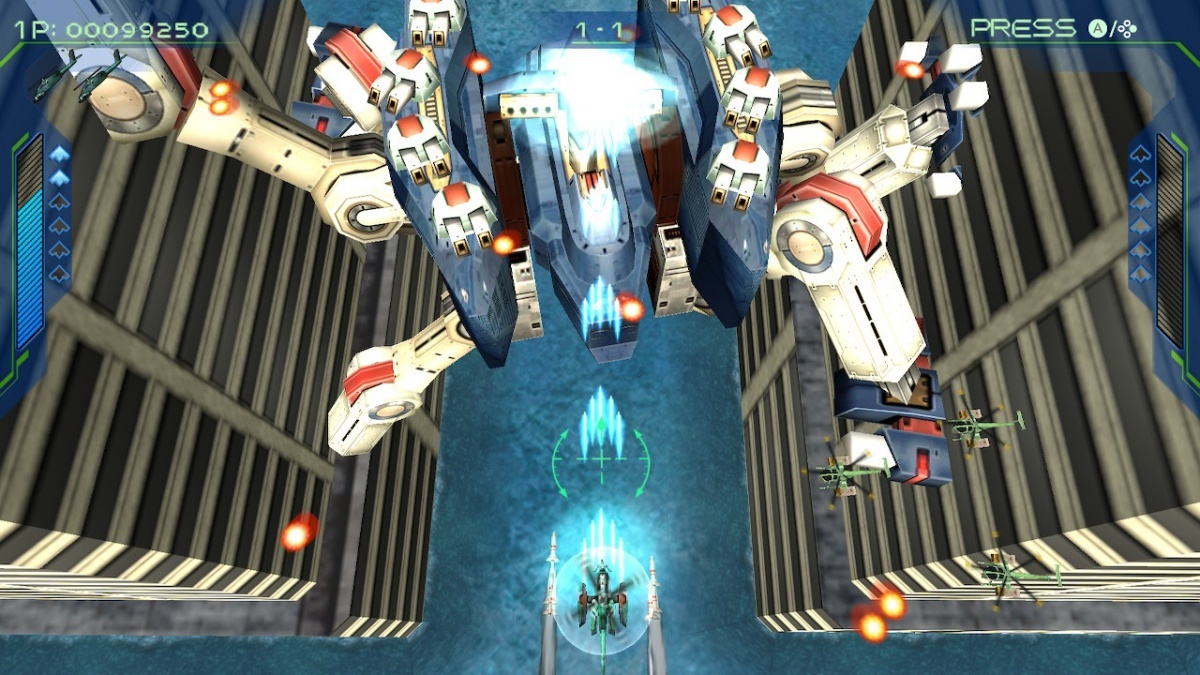
The last one included is the weirdest: Sol Divide: Sword of Darkness. For one, this is a horizontal scrolling shmup, and the only one on offer. Then, it plays nothing like any of the others included. There are three characters to choose from, and while each does indeed control differently, the most important difference is the story they will experience. Indeed, this has a more involved story than most other shmups. The stages are, for all intents and purposes, just a succession of encounters with small groups of enemies. Progression is also non-linear, offering choices of branching story paths, which means that two play-throughs with different playable characters will be very different indeed.
Gameplay-wise, there is one button for a basic firing attack, one for a melee attack, and one to use a magic spell that depletes a magic meter. Then, upon defeating enemies, some icons may be dropped which fill the magic meter, grant extra magic spells which can be toggled between, as well as power-ups which increase magic, firing or melee proficiency. If this starts to feel like an interesting mix of RPG and shmup, then you're not too far off. Enemies like to come up close and deal melee damage in this one. In those cases, returning melee attacks is primordial, since firing doesn't do much good then, while magic acts more like your typical screen clearing bomb, although the cost of spells tends to be quite high, so that they can't be abused too much.
It's an interesting concept overall but the execution, visually and in terms of the writing, means that it falls short in the RPG department, and the structure of the stages themselves, which can be super short, means that Sol Divide just remains an interesting concept to explore, but one not very likely to impress shmup fans. It doesn't help that its CG visuals haven't aged very well, and that the music is pretty forgettable. This 1997 instalment was ported to CD-based consoles of its time, with more refinements to make it feel even more like an RPG, but this here is very much just an arcade perfect port thereof, so any extra bells and whistles that those ports had are beyond the scope of this review.
Psikyo Shooting Stars Alpha feels rather packed with goodness then, even if the last game mentioned fell a bit short of expectations. It certainly has good value for shmup fans, and even more so for Psikyo fans, who should be all over the physical release of this. A slightly disappointing element, though, is the lack of more display scaling options. The inclusion of TATE screen orientation is really nice, but one can't help but wish that an option for integer scaling was included.
As they are, all but Zero Gunner 2, which scales magnificently due to it being fully 3D and rendered native resolution in both modes, exhibit noticeable scrolling shimmer, unless a screen filter is used. This means that those who like sharp looking pixels over a blurred image, or a fake scanline effect, won't be in luck. The blurry effect is really the only way to appreciate those, in the absence of integer scaling options, and this is regrettable. Also regrettable is the lack of online leaderboards for any Switch release of those classics, which doesn't give players much incentive for replayability.
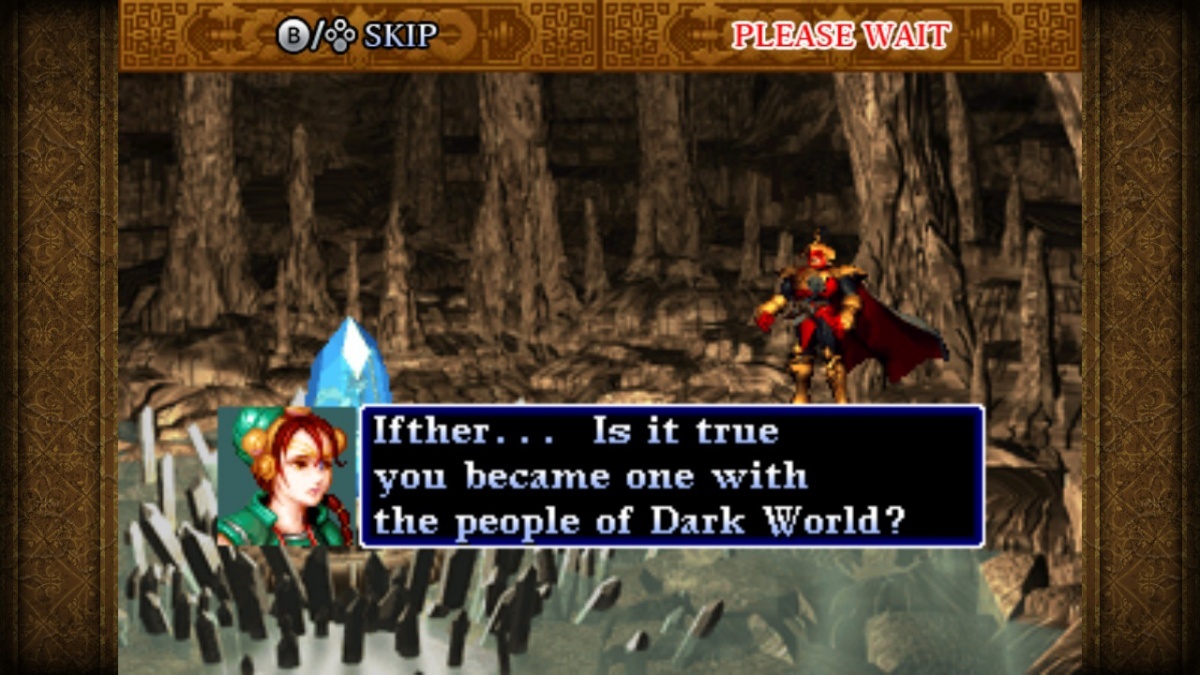
Cubed3 Rating
Very Good - Bronze Award
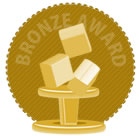
Psikyo shooters range from above average to good. Therefore for any genre fan, those tend to be safe bets for a truly good time. The fact that those six can acquired in physical form in one package, even outside of the Japanese and Southeast-Asian markets is a big relief. One can only wish that the full package was a bit cheaper on the eShop, however, since buying them all separately comes to roughly the same price, making a digital release of this package simply redundant. This also means that should only some of the included games catch the attention of anyone, at least those can be still be bought individually today. As a package however, the selection of titles may not be the best arrangement in terms of variety, but at least the value thereof is undeniable, especially to shmup aficionados. Here's hoping one doesn't have to wait too long for the other volumes.
Review copy provided by NIS America

Psikyo Shooting Collection Vol. 1
![]() 7/10
7/10
![]() 0
(0 Votes)
0
(0 Votes)
 Out now
Out now  Out now
Out now  Out now
Out now  Out now Also on
Out now Also on 
Comments
Comments are currently disabled

 Sign In
Sign In Game Details
Game Details Subscribe to this topic
Subscribe to this topic Features
Features





 Top
Top

